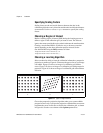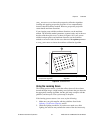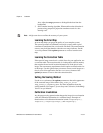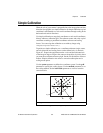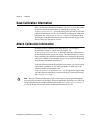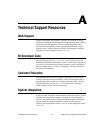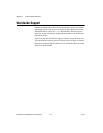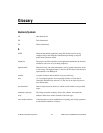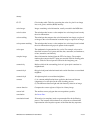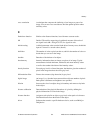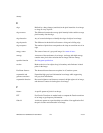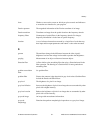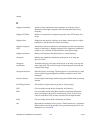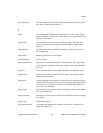Glossary
IMAQ Vision for LabWindows/CVI User Manual G-2 ni.com
B
b Bit. One binary digit, either 0 or 1.
B Byte. Eight related bits of data, an eight-bit binary number. Also denotes
the amount of memory required to store one byte of data.
barycenter The grayscale value representing the centroid of the range of an image's
grayscale values in the image histogram.
binary image An image in which the objects usually have a pixel intensity of 1 (or 255)
and the background has a pixel intensity of 0.
binary morphology Functions that perform morphological operations on a binary image.
binary threshold Separation of an image into objects of interest (assigned a non-zero pixel
value) and background (assigned pixel values of 0) based on the intensities
of the image pixels.
bit depth The number of bits (n) used to encode the value of a pixel. For a given n,
a pixel can take 2
n
different values. For example, if n equals 8-bits, a pixel
can take 256 different values ranging from 0 to 255. If n equals 16 bits, a
pixel can take 65,536 different values ranging from 0 to 65,535 or –32,768
to 32,767.
black reference level The level that represents the darkest an image can get. See also white
reference level.
blob Binary large object. A connected region or grouping of pixels in an image
in which all pixels have the same intensity level. Blobs are also referred to
as objects or particles.
blob analysis A series of processing operations and analysis functions that produce some
information about the blobs in an image.
blurring Reduces the amount of detail in an image. Blurring commonly occurs
because the camera is out of focus. You can blur an image intentionally
by applying a lowpass frequency filter.
BMP Bitmap. Image file format commonly used for 8-bit and color images
(extension BMP).



